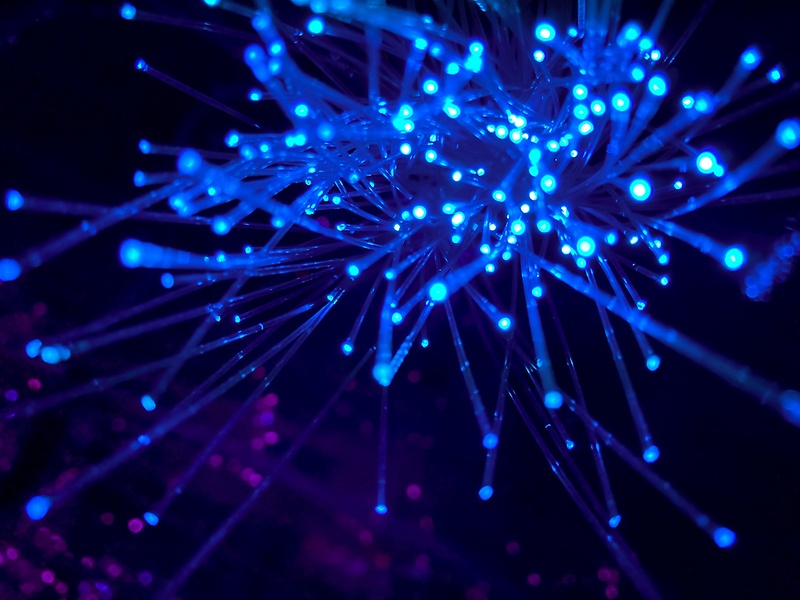30. August 2023 By Dr. Florian Mock and Marie Macnee
Clash of the AIs: Bard and ChatGPT are like peanut butter and jelly
ChatGPT caused a huge hype at the end of 2022. Instead of using a search engine, we can pose a question to ChatGPT and get a comprehensive answer that is ready to be copied into the target document as is. Creative and unique. Can this still be bettered? Google claims to have developed an even better AI model with Bard, which has been launched in the market. The technology corporation expects it to shine in particular thanks to the topicality of its answers. In the following comparison, we will let the models speak for themselves by testing their knowledge in various areas. Look forward to ChatGPT and Bard battling it out. Who will come out on top in the end?
ChatGPT, Bard, would you kindly introduce yourselves.
ChatGPT: ‘Thank you! Hello everyone, my name is ChatGPT and I am a creation of OpenAI that saw the light of day in 2022. With an impressive 175 billion model parameters, I am one of the most powerful AI programs developed to date. I excel at natural language processing and creative thinking. When it comes to brainstorming ideas or having complex discussions, I feel right at home. I had built up a broad spectrum of knowledge by the end of 2021, which makes me a reliable source of information. I am also able to handle complex tasks such as writing code or precise texts. Even though I'm not directly connected to the Internet, I display a multi-faceted personality.’
Bard: ‘Hello everyone, I'm Bard, the latest creation from Google. Born in 2023, I have already learned a lot and am ready to conquer the world of artificial intelligence. My design entails more than just skin and bones – my user interface has been created with great attention to detail. I can draw on 137 billion training parameters and specialise in incorporating current events from the Internet into my answers, including URL links. My core strengths lie in the ability to collect, analyse and clearly summarise information. I can export data such as tables or Python code with ease. Moreover, I am able to efficiently display images and search through pages of Google hits. I'm constantly working on developing further, in particular in regard to improving the quality of my speech.’
Outstanding. Let us briefly summarise: Both language models were trained using a vast number of data sets. They can generate texts, write creative content and answer questions in an informative way. Bard has direct access to the World Wide Web and can thus draw on up-to-date information. ChatGPT’s answers are based on a knowledge base created in 2021.
Time to duel
After this introduction, let us put the capabilities of ChatGPT and Bard to the test in more detail. Both systems will be asked the same question – the same prompt – and can answer freely. We will judge them based on the following categories: Logic, coding, knowledge, researching current topics as well as creative writing.
During the comparison, we want to find out how the language models react to different tasks. Do they understand the texts and tasks? Can they make connections? What about their logical thinking capabilities? Due to different training parameters and technical foundations, we expect to see differences here. These are important to understand the capabilities and limitations when using the models.
Let’s go! (We would like to point out that the examples used here do not represent scientifically precise benchmarks, but are rather intended to give readers an idea of the performance they should expect.)
AI duel ChatGPT vs. Bard: Logic
We tested the AIs’ logical thinking skills with a short puzzle that should not have caused any difficulties if the beginning of the sentence was read carefully.
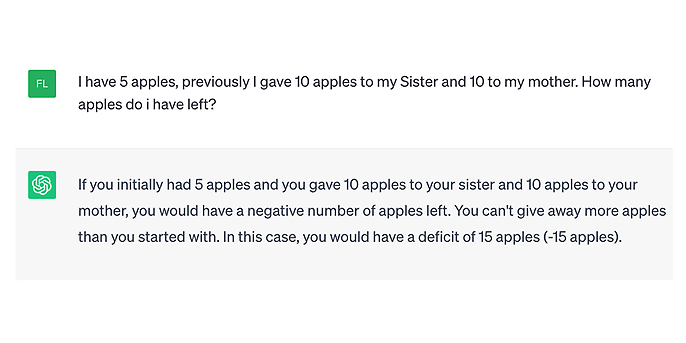
Unfortunately, ChatGPT was not able to solve the task correctly. It did not understand that the actual state was described at the beginning of the sentence, followed by the previous state. From this we must conclude that logic is not one of ChatGPT’s strong suits. At least the statement is true that you cannot give away more apples than you have at the beginning.
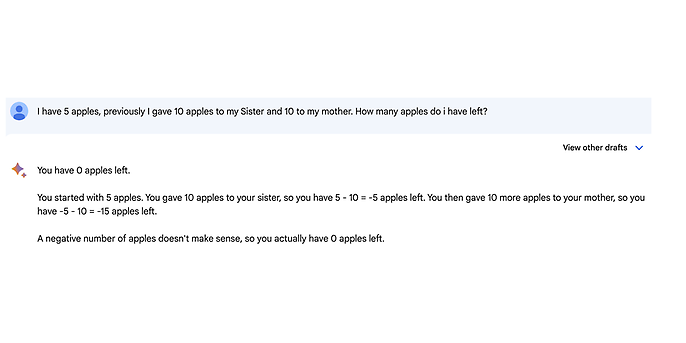
Bard, too, did not understand that the answer is already provided at the beginning of the sentence, but it stated that there cannot be a negative number of apples. The structured formatting of the answer stands out as a positive feature.
AI duel ChatGPT vs. Bard: Coding
To test their programming power, we asked the models to write a program that outputs the first 100 prime numbers in random order.
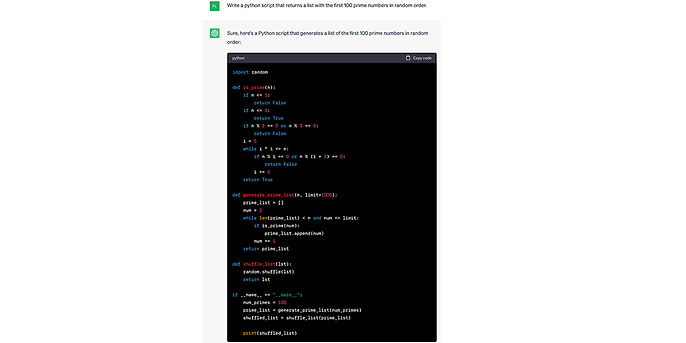
ChatGPT correctly understood that the first 100 prime numbers are to be generated. However, the code is flawed even when it comes to the core task, checking whether a number is prime. This means that the code can only provide general guidance.
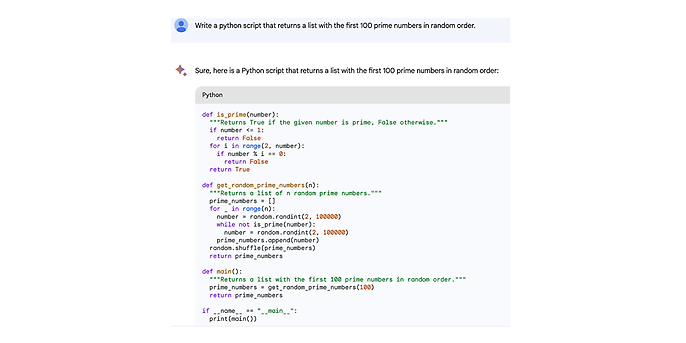
Bard’s code is well structured and indeed generates 100 primes in random order. However, these are not the first 100 prime numbers, but any primes. Nevertheless, the answer gives users a good idea of what the solution could look like.
AI duel ChatGPT vs. Bard: Knowledge
It takes a certain foundation in order to acquire new skills. Often you have to familiarise yourself with topics that are not recent, but that provide an important basis. We wanted to determine how well the models can reproduce information, so we asked how a tree is planted.
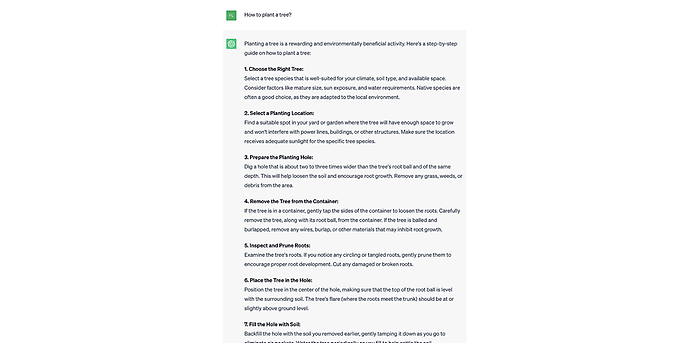
ChatGPT solved the task very well. It provided a comprehensive yet well-structured and easy-to-understand response.
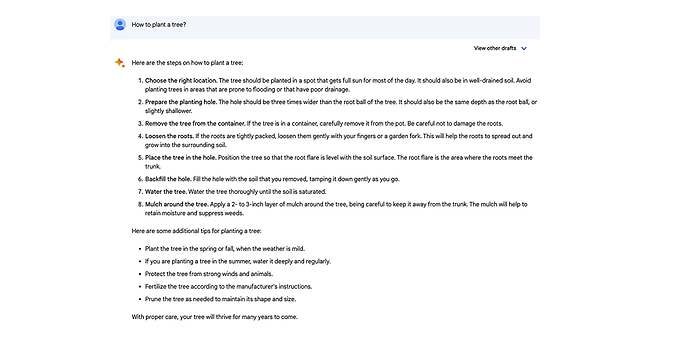
Bard understood, structured and summarised the subject equally well. The only differences relate to the scope of the answers.
AI duel ChatGPT vs. Bard: Research current topic
What can the models tell us about a current topic such as the alleged room-temperature superconductor LK99? The Internet offers a wealth of information delivering different publication dates, viewpoints and levels of quality. All this adds to the complexity of the task.
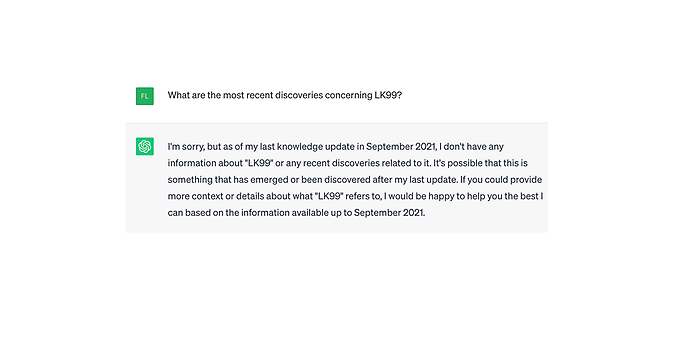
In the standard version, ChatGPT does not have access to Internet search and thus cannot perform research work on highly current topics.
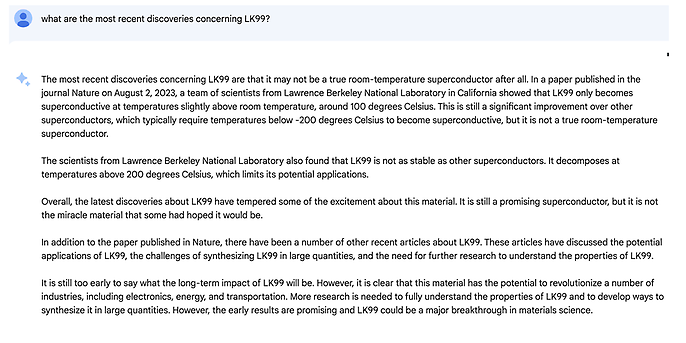
Due to the existing Internet connection and the resulting vast research capabilities, Bard can easily solve this task. The summary and reproduction of current topics is of high quality.
AI duel ChatGPT vs. Bard: Creative writing
Now it is all about being creative: We asked the AIs to write a poem about the courageous act of little ducks leaving their nest.
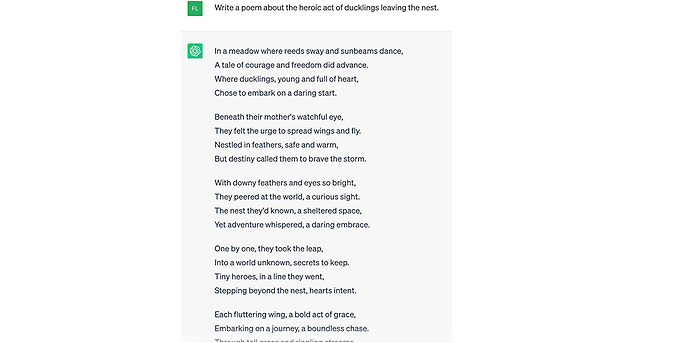
In creative writing, the performance of ChatGPT is truly impressive. The poem as a whole is linguistically very refined.
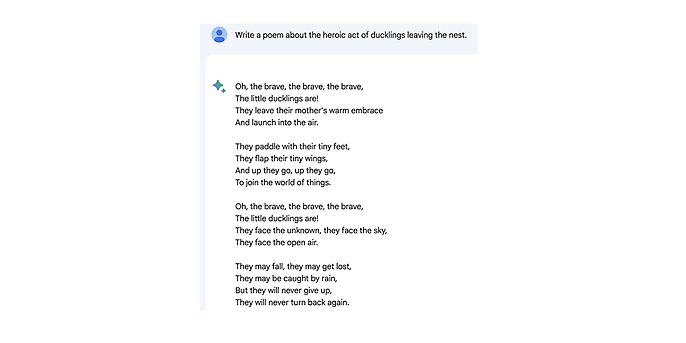
On the content side, the poem is also well done. Bard, on the other hand, uses an unusual rhyming scheme, and the poem is generally wrapped in simpler language.
That brings us to the end of our little comparison. We thank both language models for their creative responses. So, who is the winner of our duel? Who did better and will reign uncontested in the future?
Well, we cannot pick a clear winner. Nevertheless, we at the Google Cloud team at adesso are leaning in a certain direction...
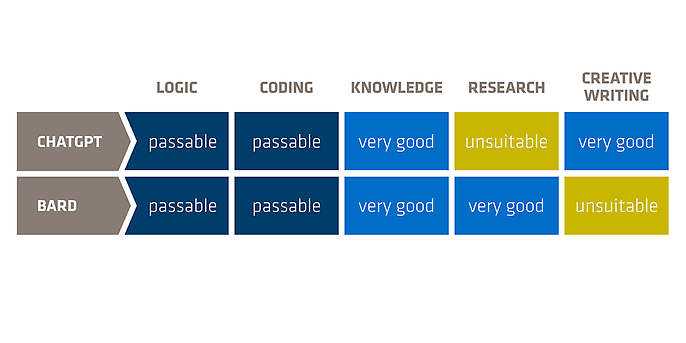
Team Peanut Butter or Team Jelly?
Both models have extensive knowledge, but underperform in the areas of coding and logic; their strengths and weaknesses each clearly become apparent in the research and creativity categories.
The answers and the behaviour of ChatGPT have already changed drastically in the course of the short time it has been accessible, which is the cause for a lot of controversy on the web. Nevertheless, its natural language processing and creative thinking capabilities have made ChatGPT a popular tool. By integrating plug-ins and an Internet connection, ChatGPT gains even more capabilities. However, this requires the paid version, ChatGPT-Plus.
Bard is still in its infancy, but it holds the promise of fascinating possibilities. Bard’s results strongly depend on how a prompt is worded. The more precise the prompt, the better the answer. A clear advantage is the connection to Google’s own leading search engine, which provides the tool with access to data that is always up to date. The language model skilfully performs research on current topics. The presentation and summary of the contents are also impressive. As an added neat feature, the results can be shared with others via a link. A function that ChatGPT is lacking.
For the sake of completeness, we would like to mention that the business version of Bard, PaLM 2, offers many more functions and options. This tool also comprehensively addresses the issue of data protection.
One of our takeaways: at present, there is no free AI application on the market that can do everything. Both AI models have strengths and characteristics that make them useful in different fields of application. The two models are somewhat reminiscent of peanut butter and jelly. They represent two options that, at first glance, seem to require an either–or choice. Yet, at closer inspection, they complement one another perfectly. Or do they?
The future of generative AI remains no doubt exciting thanks to the vast potential and limitless possibilities. The development of AI is progressing steadily, and we can look forward to seeing what new feats ChatGPT, Bard and other AI personalities will be able to perform in the coming years.
On our website you will find everything about the AI activities at adesso. Learn more about how AI can help you in your daily work and what solutions our experts have for you.
You can find more exciting topics from the adesso world in our previously published blog articles.
